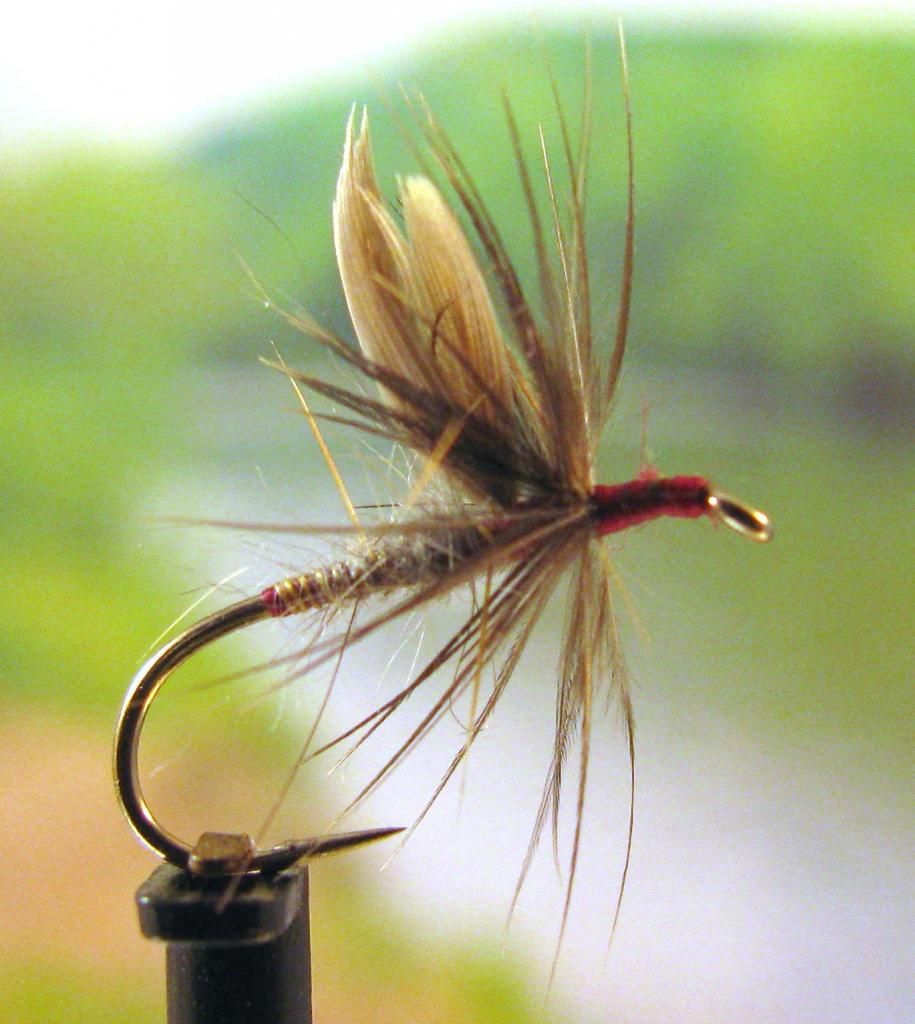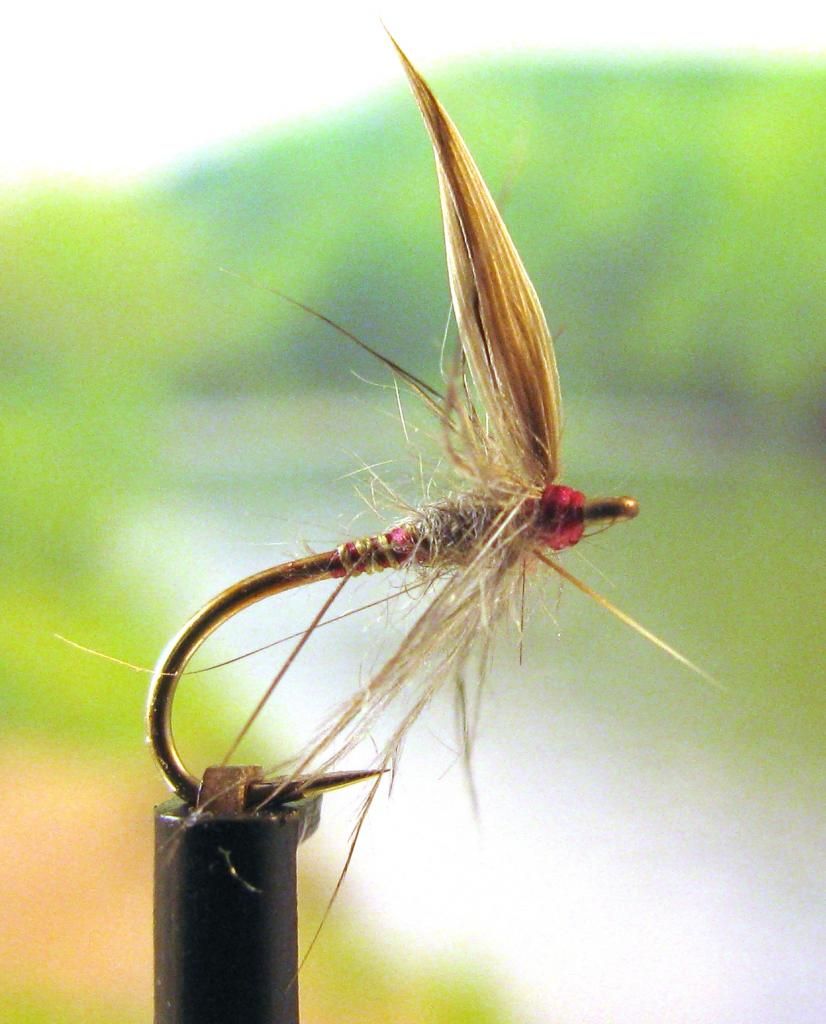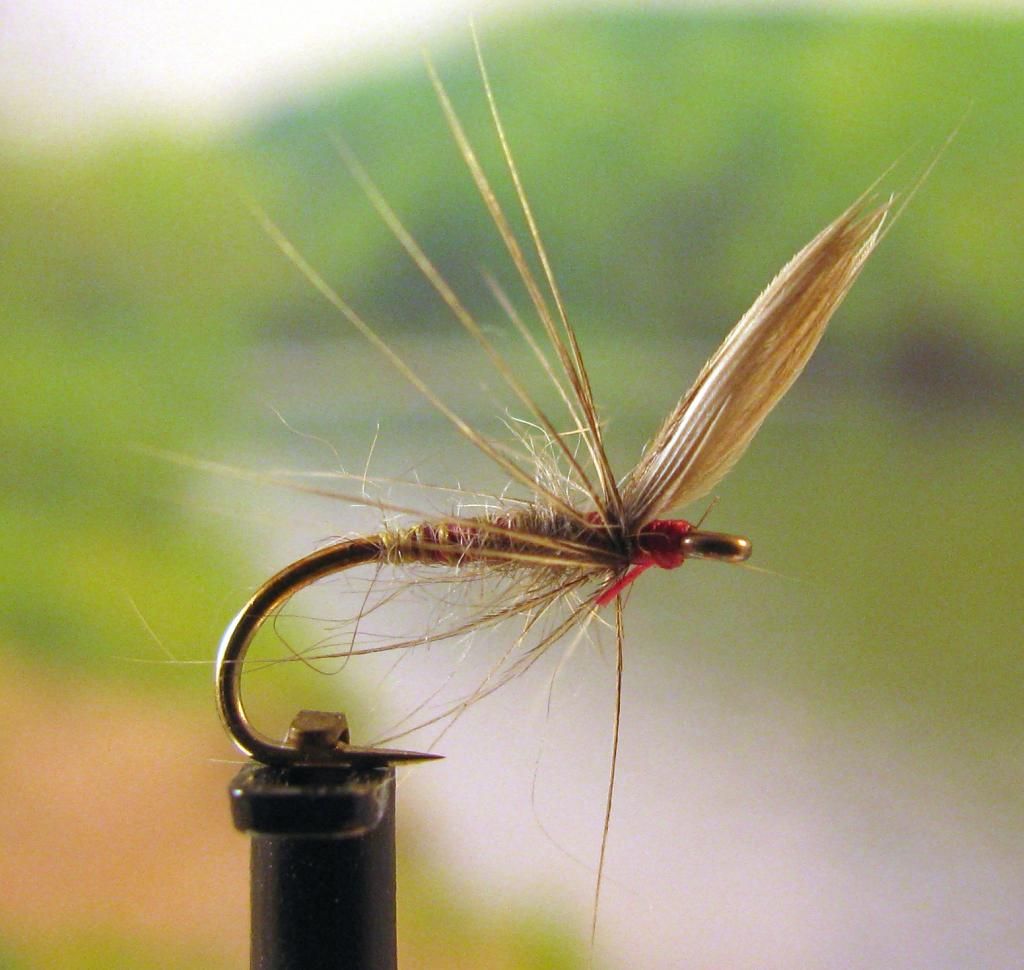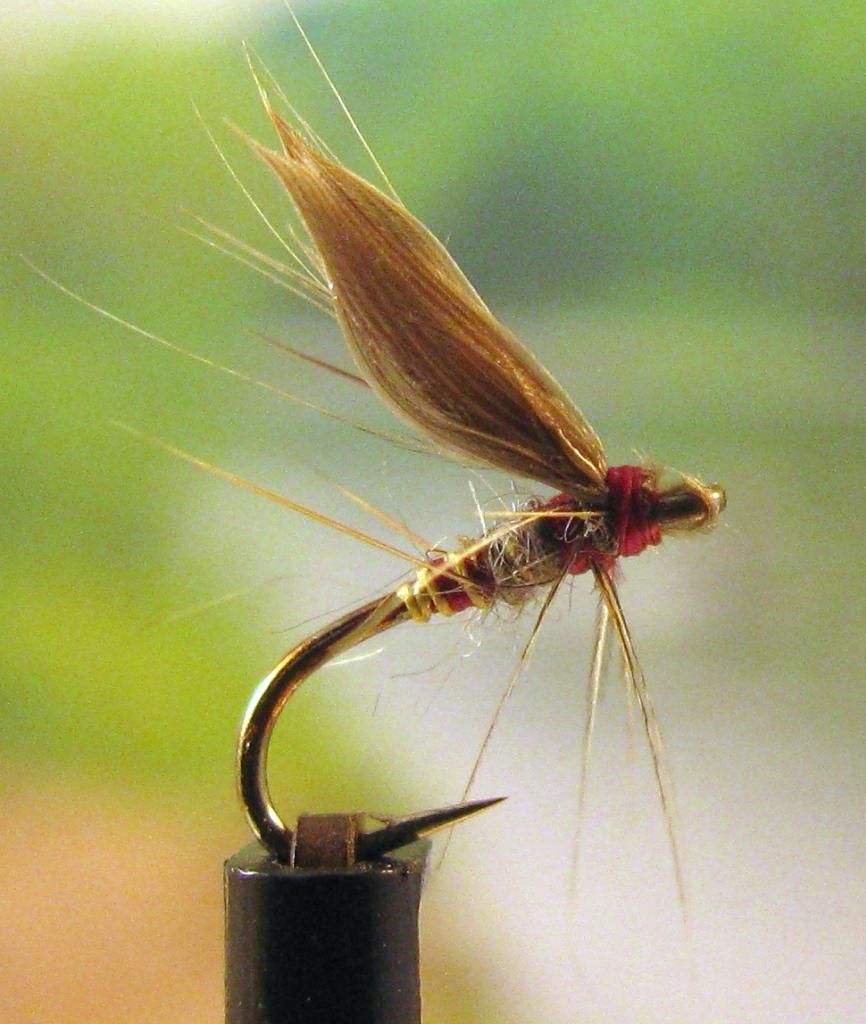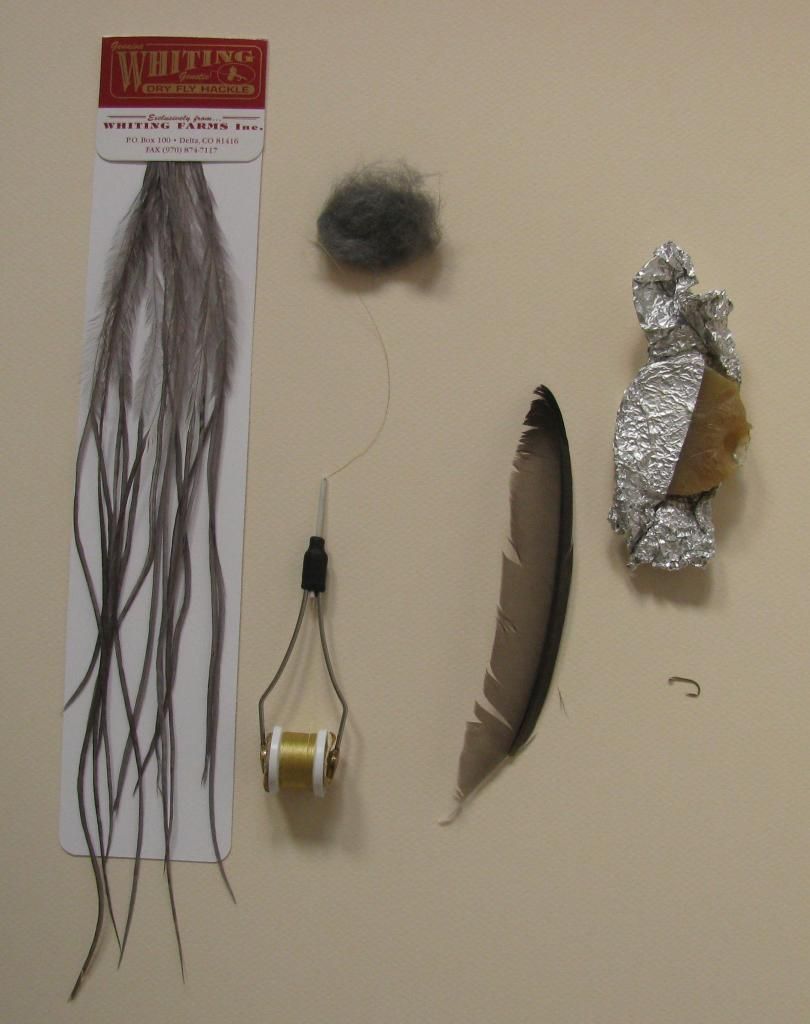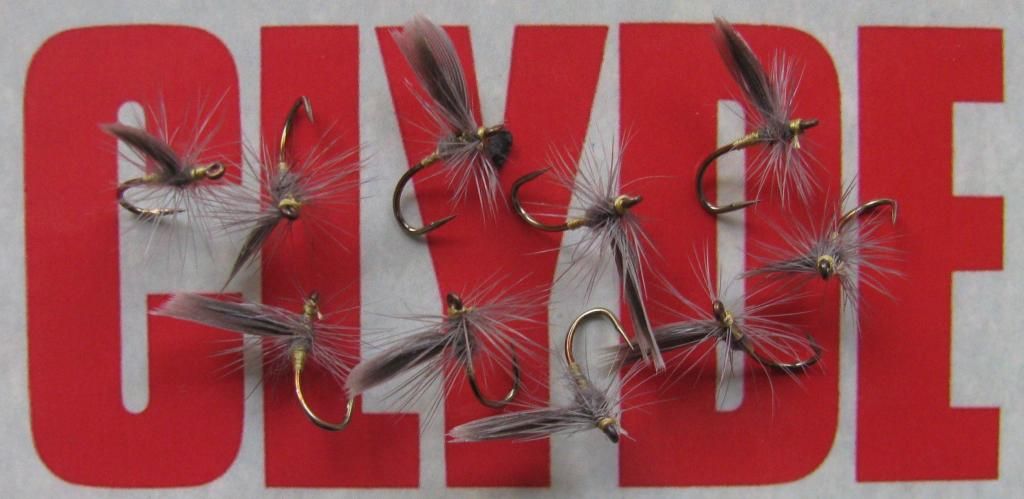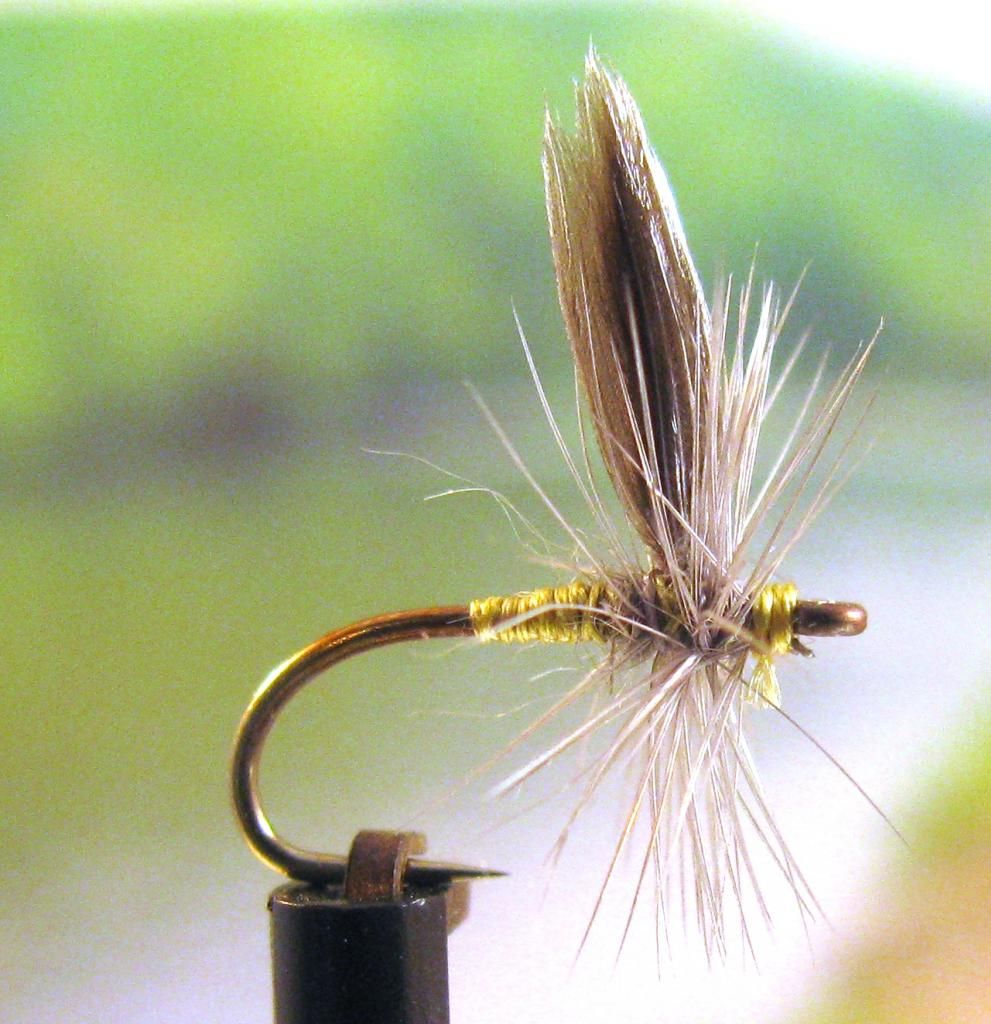Post
by Ruard » Wed Aug 06, 2014 12:38 pm
I found the page where Skues explains the flies in the starting picture:
STYLES OF FLY DRESSING The angler who has fished with the fly in different parts of the country cannot fail to have noted the extraordinarily differing ways in which the same natural fly is imitated, represented, or suggested in different parts of the country and for different rivers and streams.
As nothing of any permanence is without reason, it must be inferred that these differences correspond to differences in the conditions under which fly fishing is pursued in streams of different classes.
In Plate I. I have reproduced a series of patterns of the same fly—the large dark
spring olive or blue dun— dressed according to methods prevailing in different parts.
Fig. 1 represents an attempt at what is styled, for lack of a better term, "exact imitation." It purports to represent the natural fly sitting up cocked on the water in the attitude in which it may commonly be seen on the clear chalk streams of the South. It has wings (double dressed) and legs, body and tails; and the colours of the different parts purport to correspond with those of the natural fly. It is fished in conditions in which, by reason of the clearness and slow pace of the water, the trout has time for a good look at the fly ere it takes it.
Fig. la is a Derbyshire dressing from the hands of Mr. C. A. Hassam, of the Fly Fishers' Club—than whom no more exquisite artist in trout flies, whether amateur or professional, has ever come within my ken. The wings are single dressed and the whole fly a model of lightness and delicacy.
Fig. 2 represents the same fly as dressed for the tumbling Yorkshire and North-Country brooks and rivers. It is dressed with a fur body, which, when wet, is remarkably transparent and lets through, while it darkens and accentuates, the olive colouring of the waxed silk with which the fly is tied, and the tumbled hackle from the waterhen (moorhen) suggests the tumbled, dilapidated state in which a fly whose wings have been caught by the current might be whirled down-stream in such waters. If used as a dropper, fished upstream and across, this type of pattern with its mobile wings may well constitute an effective suggestion of a fly struggling with its difficulties upon the surface. All the Yorkshire and North of England patterns seem to be dressed upon this theory. Both these types of fly are meant to be fished upstream, or up and across.
Fig. 3 is a dressing from the Usk. The Usk is a broad, solid river, where, I imagine, the bulk of the fishing is to be done by casting across stream. Here the theory appears to be that the artificial fly is a sketch. Note the slight shred of wing, the slim body, the slight but active hackle.
Fig. 4 is a dressing of the fly intended to be fished downstream, or rather across and down, in such solid streams as the Teme. It has, therefore, what is described as a good entry; that is to say, a shape which is calculated to create the least unnatural disturbance through its breasting the current or swinging across it. It is to stand hard wear, so the wings are rolled into a single solid pad.
Fig. 5 is a single-winged pattern— i.e., a pattern dressed with only one thickness of wing fibre to represent each wing of the natural fly 1 —and in a variety of quality it is perhaps the commonest and least rational of all the types of fly dressing.
Fig. 6 is a Devonshire pattern, dressed with sharp, bright, dancing hackles, probably intended to suggest a struggling nymph rather than the hatched winged fly.
Fig. 7 is a rolled-winged pattern with upright wings akin to the Greenwell's Glory. It is one of the few winged patterns of the Northern English counties and the South of Scotland, and its upright split wings will either enable it to go down-stream almost afloat like the natural fly, or, if it be drawn under, it will be whirled about in a way to suggest considerable life and activity. It is suitable for upstream fishing—even in chalk streams.
Fig. 8 is a type of fly affected by the fly fishers of the Clyde and its tributaries. It is extremely sketchy, but as I have never fished, or even seen, the waters where it is used I am unable to do more than guess at the theory of its operation. It appears somewhat akin to the Tweed type.
Even sketchier is the type of pattern illustrated in Fig. 9, but I have known Scottish burn fishers fill bumping creels with just such simple patterns busked before setting out with a mere wisp of feather for wing, a tiny hen hackle pulled from a fowl caught for the purpose, a few inches of tying silk, and perhaps at times a tiny pinch of wool from coat or cap for the body
Perhaps of any help??
Greeting
Ruard
